.jpg)
La nouvelle 911 Carrera
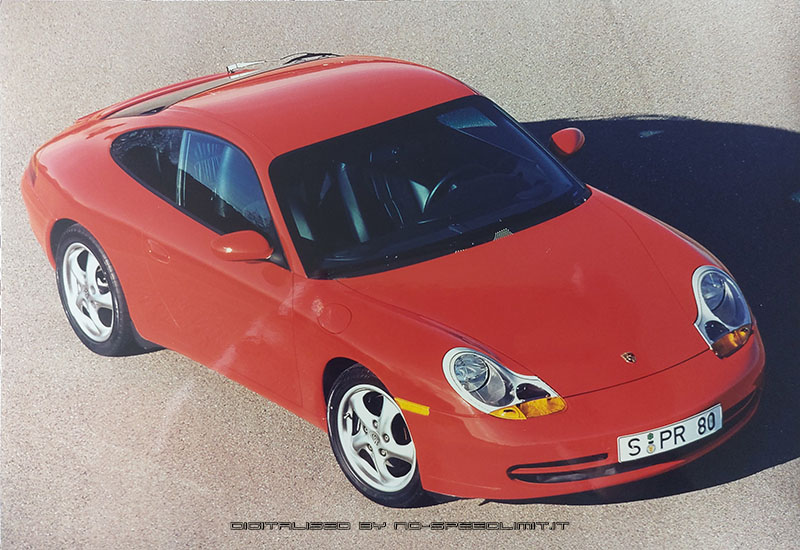
The engineers and designers at the Porsche Research and Development Center in Weissach followed their own convictions when they further developed the Porsche 911 for the 21st century, based on the classic design. Customers around the world have clearly agreed with this decision: demand for the new model has exceeded expectations. No other 911 generation has ever registered such strong purchasing interest immediately after its market launch. The Cabriolet, which now expands the model family, will further increase its popularity.
The design of the new 911 Coupé incorporates the design language of the classic in all its essential features. However, the styling elements are more subtle and elegant. The fenders are no longer as prominent. The width required by the chassis and tires of a modern high-performance sports car has been harmoniously incorporated into the body. Even in revising the classic silhouette, Porsche designers found a starting point for further improvement. The transition from the windshield to the roof is now more fluid. Although the new 911 fundamentally adheres to the traditional lines of the most successful Porsche, its recognition as a new model is, as practice has shown, extraordinarily high.
Streamlined and smoothed across the board, the new 911 has significantly improved aerodynamics. The drag coefficient has dropped from 0.34 to 0.30. Although the body is wider and the frontal area larger, overall drag remains lower than before. Lift on the front and rear axles has been reduced to exemplary low values. This greatly benefits driving safety at high speeds.
The new body also offers more space. Passengers enjoy more elbow room and an overall more generous feeling of space. Knee room in front of the rear seats has also increased. The front trunk has a capacity of 130 liters, and the storage area behind the rear seats has been expanded by an additional 65 liters. With the seats folded down, the cargo volume is approximately 200 liters.
By redesigning the supporting structures and using special, high-strength sheet metal, the engineers were able to significantly strengthen the proverbial solidity of the Porsche body. Torsional strength and flexural rigidity are around 50 percent higher. The body's deformability in accidents is greater. Crash tests at Porsche have shown that the load on the occupants remains low, even in severe collisions.
After more than 30 years, a water-cooled six-cylinder boxer engine replaces its venerable predecessor. The new engine is more powerful despite its smaller displacement: 3.4 liters, 300 hp (221 kW) at 6,800 rpm, maximum torque of 350 Newton meters at 4,600 rpm. Fuel consumption figures in tests and in practice are lower than those of the predecessor. Pollutant emissions in the exhaust are significantly lower, and the measured values are also significantly below the Euro standard. The noise level is also well below future limits. But an unmistakable Porsche sound can still be heard.
The manual and automatic transmissions have been redesigned. The six-speed transmission is more compact externally, its gear sets are adapted to the increased torque, and are lighter overall. The Tiptronic S automatic transmission in the new 911 has five gears and performs gear changes even more spontaneously.
The chassis has undergone systematic further development. The rack-and-pinion steering has been moved to a position in front of the front axle that is more advantageous for the steering geometry. The front wheel suspension – based on the McPherson system – now features elastically connected cross struts and trailing arms instead of rigid wishbones. This allows for better elastokinematic toe-in control than before to stabilize the car's self-steering behavior at the cornering limits. The rear wheels, guided by five control arms, also change their toe-in values when cornering, ensuring slight understeer and effective braking at the limit. All wheel control components and their supporting elements are made of light alloy.
The second goal of the fine-tuning of the chassis was to improve suspension and ride comfort. The success of these measures is very clear and pleasantly noticeable in the standard chassis setup. The new 911 is more than ever a grand touring car with outstanding long-distance capability. As an alternative, Porsche offers a sports setup that also meets the demands of ambitious drivers.
The superiority of this slightly stiffer chassis setup is particularly evident on racetracks. On the Nürburgring Nordschleife, the new 911 with the sports suspension is ten seconds per lap faster than its predecessor – also equipped with the stiffer springs and dampers.
To further improve stability, the braking system was fitted with four-piston monobloc light-alloy brake calipers, proven in the 24 Hours of Le Mans. They guarantee maximum deceleration and minimal fading.
The wheels of the 911 were made one size larger, not least because of the larger brake discs.
Aluminum wheels with 17-inch rims are standard equipment. 18-inch rims can be purchased as an option or as part of the sports package.
Electronics are becoming increasingly important in the Carrera. The water-cooled six-cylinder engine is managed entirely by the Digital Engine Electronics (DME). The ignition distributor has been eliminated. The ignition voltage is supplied directly to the spark plugs from six individual ignition coils. The mixture is prepared by an electronically controlled injection system that supplies each individual cylinder (sequentially) during the intake stroke.
The anti-lock braking system (ABS) is, of course, also computer-assisted. The optional Automatic Brake Differential (ABD) uses the same information to bring individual spinning drive wheels to a stop by braking enables safe starting on slippery surfaces. The ABD is combined with a traction control system (TC), which also reduces engine power if necessary.
The increasing integration of electronic components reaches a new logical culmination in the Porsche Communication Management (PCM). The device, equipped with a screen and located in the center of the dashboard, which is of course also available for the Boxster, combines the following functions: audio system with CD player, mobile phone with hands-free system, automatic climate control including air distribution, on-board computer with information on fuel consumption, distance traveled, average speed, etc., and satellite navigation with road maps on CD-ROM.
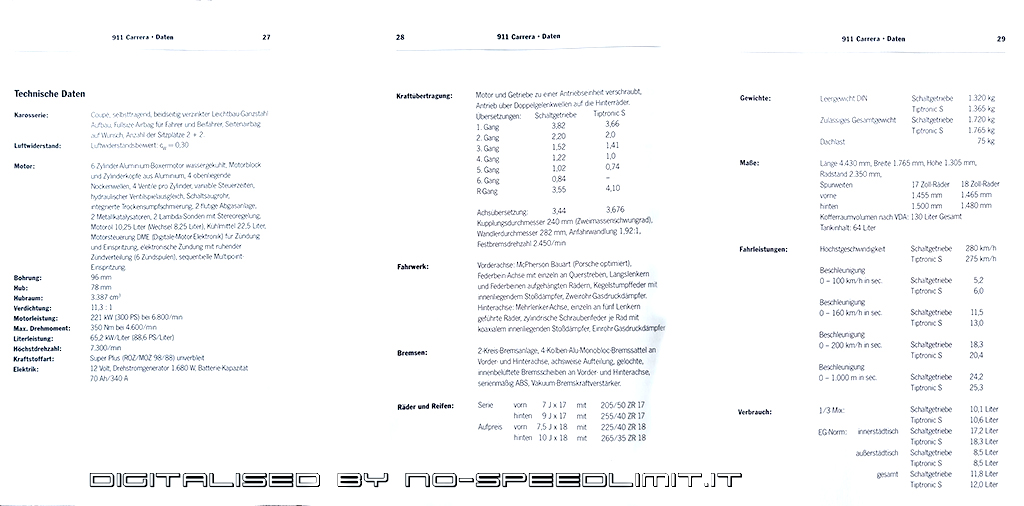
.jpg)
La nouvelle 911 Carrera
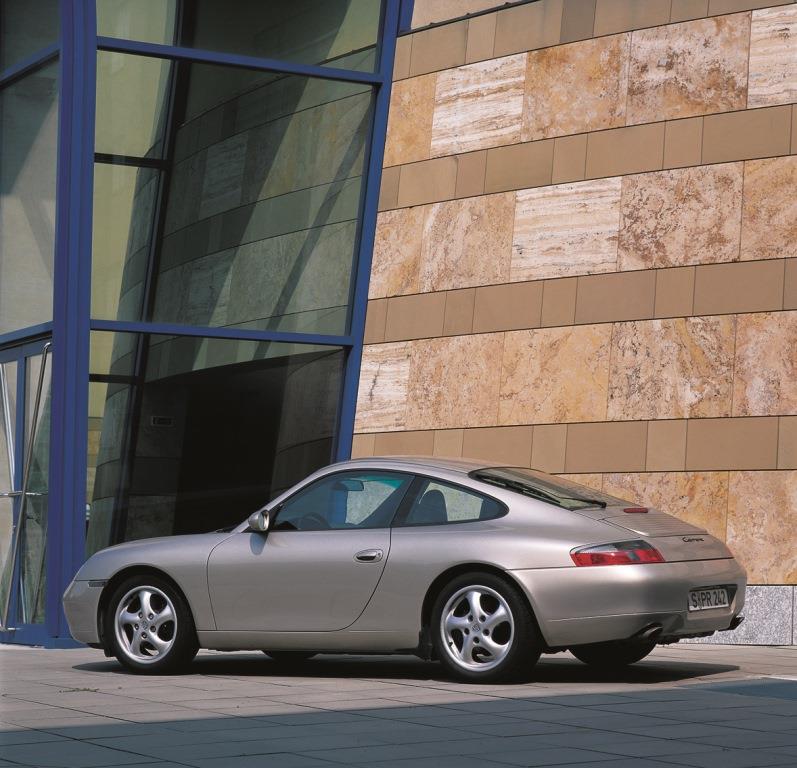
1999 Geneva - 911 Coupé
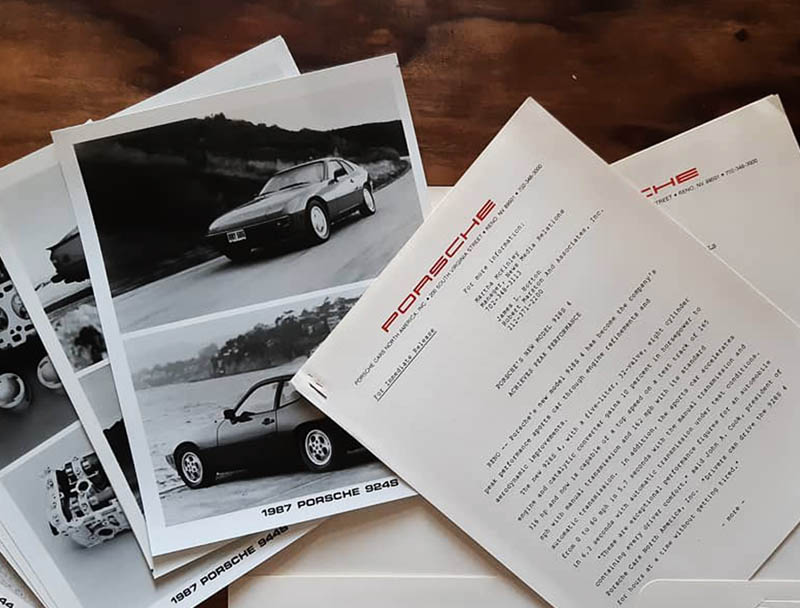
Porsche Press kit
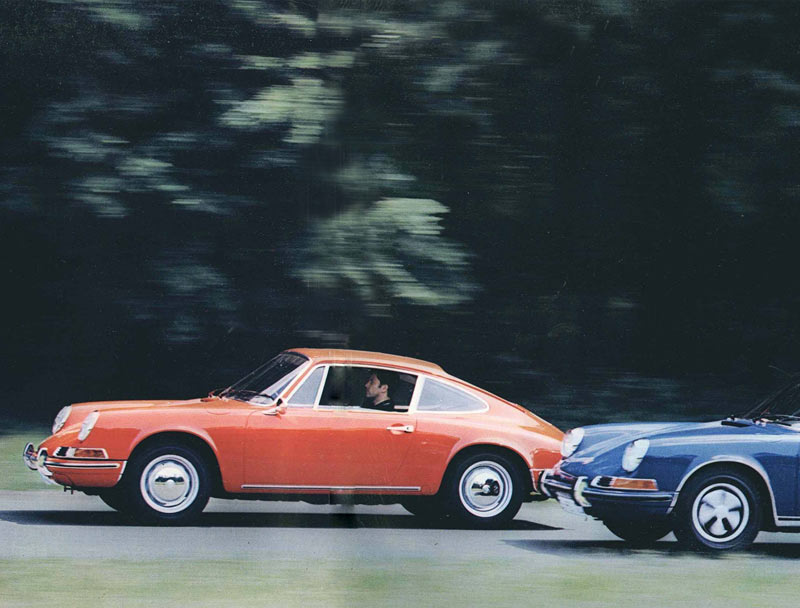
Porsche Literature
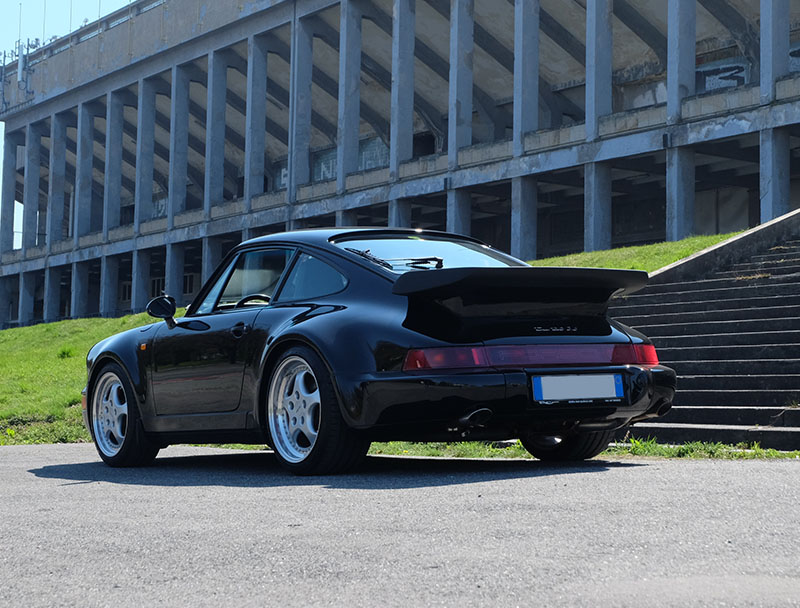
Our Porsche Cars